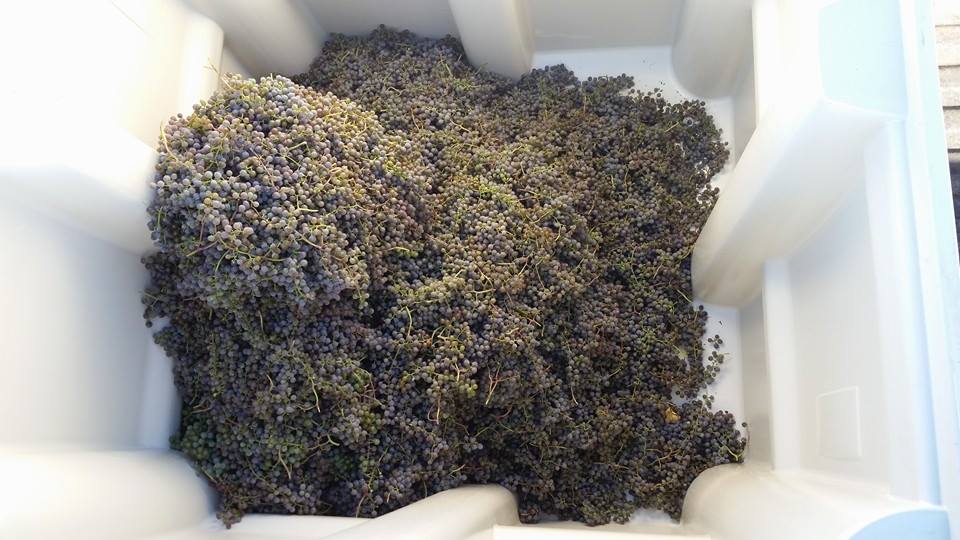
Mead vs. Wine: What Are The Differences?
What Are The Differences Between Mead and Wine
When it comes to fermented beverages, those who aren’t fans of beer or cider often find themselves comparing mead vs. wine. While wine is a staple on grocery store shelves, mead—often referred to as honey wine—has been making a comeback, sparking curiosity about what sets these drinks apart. Is it their history, ingredients, taste, or even the fermentation process? Let’s dive in.
For starters, the key difference lies in their primary ingredients: wine is made from grape juice, while mead is created using fermented honey. Most grape wine is straightforward, made exclusively with wine grapes and sometimes blended before bottling for consistency. In contrast, meads often include various ingredients, such as fruits or spices, to add complexity. Even in the fermentation process, wine relies heavily on the role of grape skins for flavor and texture, while mead takes on the unique character of its honey source.
Another common misconception stems from the term honey wine. Some assume mead is simply wine with added honey or that it’s always sweet, but this isn’t the case. Similarly, while wine has been a cornerstone of the global wine trade, mead holds a storied history of its own, tracing back to ancient civilizations where it was revered as a drink of gods and kings.
Ultimately, comparing mead vs. wine isn’t about declaring a winner—it’s about appreciating their differences and unique appeal. Whether you’re savoring the crispness of a classic wine or the rich, aromatic flavors of mead, each has its place at the table.
What sets them apart?
Well, for starters, one is made with grapes and the other is made with honey. However, wine generally is only made with grapes while meads can incorporate a number of other ingredients to give it complexity. Wine is usually straight forward unless blended with other vintages, which they typically are before being bottled. See, already one difference discovered!
There are significant distinctions to note when exploring mead vs. wine. While none of these things mean that in the mead vs. wine taste battle that one is better than the other. It’s just important to know they are very different. It’s a common misunderstanding that they are since mead is also known as honey-wine. People will purchase it thinking that it’s a wine that has honey in it or is very sweet.
So, what else should a person know? Well, there are definitely a few things. Let’s start with the very different histories mead and wine have before moving to the differences in their basic ingredients, how types of wine and mead differ themselves, and price differences.
Wine History vs. Mead History
Wine history and mead history are both long, as both have been enjoyed in cultures ancient and modern. Both drinks are held to have originated prior to civilization by accidental fermentation by wild yeasts.
Mead history, however, is truly global as wine drinks are consumed on every continent and have been for thousands of years. Grape wine, however, was mostly confined to the Mediterranean (both Africa and Europe) and the Near East.
Part of the reason wine has been confined to the Mediterranean is because of where grapes can grow. With modern technology in farming and distribution capabilities, where grapes can be grown, are less of a problem. On the other hand, Bees are pretty much everywhere and, therefore, honey can be harvested pretty much anywhere as well.
Unlike mead, which could be made around the world, wine’s popularity and even the knowledge of its existence didn’t spread till global trading began. You’re probably wondering why, then, did wine become a popular drink for so long. Well, mead began to fall out of favor when spirits came to the shelves. During the 1700s and 1800s spirits began becoming more widely available and since many people didn’t have the equipment to harvest honey, mead slowly became forgotten. Wine and beer are easier to make than mead, even though the ingredients to make mead are easier to obtain. A bit of a catch-22.
If you look around now, there are over five-hundred meaderies in the United States alone. How did it go from being everywhere to nonexistent to becoming the new go-to drink? Funny enough, you can thank the craft beer renaissance currently happening for mead’s rising popularity. When restrictions on brewing beer at home were lifted, people began exploring different sorts of beer to make, and that lead to brewing mead. With the rise in craft beer distilleries, meaderies turned out to be next.
Going back to mead vs. wine, the closest wine has ever come to falling out of favor is during the Great French Wine Blight around the 1950s. During that time absinthe became the new standard drink around Europe…until it was banned and wine bounced back again.
History is fun, isn’t it?
Wine vs. Mead: Basic Ingredients
The basic ingredients are certainly an aspect of the differences of wine vs. mead. Both are relatively simple, even though making quality examples of each take a good amount of artistry.
Wine, most commonly, is made with a must of crushed fruit – sometimes by hand/foot or by mechanical macerating – combined with a bit of sugar, some water, and yeast. The pulp is strained and the juice fermented, stored and eventually bottled and drank. You can make wine by using a different fruit as well; strawberry, chokecherry, plum and dandelions wines are all popular non-grape variants.
Note, however, that wine differs from cider in that cider is pressed, and only the juice used rather than a pulp of the macerated fruit. Cider also uses a different form of yeast.
Mead, on the other hand, is often little more than honey, water, and yeast. Since honey contains all the necessary sugar for fermentation, you don’t need much more. Sometimes sugar is added to aid fermentation, but again it isn’t strictly needed.
Wine Varietals Require Wine Grapes
Another aspect of mead vs. wine is how each is classified. Wine varietals – of which there are hundreds – are determined by the constituent wine grapes, which are different than the grapes you find at the grocery store. Concord grapes make a great snack, but they also make terrible wine.
Regarding wine, the varietal determines the type, the color and also the flavor. Red wine is made with the skins of the grape while white wines are skinned before pulping.
Merlot grapes make a soft, balanced, fruity red wine that may lack the depth of other varieties but pleases most palates. Pinot Grigio, a.k.a. Pinot Gris is a dry, crisp white wine that some love – especially when chilled – but others find too tart. Pinot noir, a red wine varietal of the pinot grapes, when correctly grown (it is notoriously temperamental) produces a dark, earthy and complex wine that some revere above all others and other people curse.
Mead, however, is usually classified by ingredients but also by sugar content. Sweet and semi-sweet meads can have added sugars and dry meads lack in sweetness much like dry white wines.
Wine Blends Are An Art; Mead Blends Are Almost Nonexistent
Another difference is that most wines are wine blends, including those made with wine made from only a single varietal of grape.
Huh?
It’s a lot like making a blended Scotch whiskey. The blender takes multiple vintages (barrels of a single year’s run of wine) and comes up with a combination of them. Wines of multiple ages are combined; some may be close to 10 years old (or older) and others are practically new. Other wine blends – commonly called table wines – are blends of multiple varietals and vintages.
Only single estate wines are made from a single year of grapes, like a single malt Scotch.
Mead, however, typically isn’t blended. The production run goes in the bottle.
Types Of Mead Depend On Ingredient
The various types of mead are classified by ingredient rather than the varietal of fermentable material. Additional ingredients, such as fruit juices, hops, spices and so on also determine the type of mead. A cyser, for instance, has apple juice added to it and a pyment has wine added to the mead. A melomel has raspberry juice added to the mead, and so on.
Granted, there are some wines that are made with additional ingredients. Fortified wines – such as port or sweet Madeiras and sherry – have additional alcohol added (in the form of neutral spirits) as well as added sugar. Champagne, prosecco, and spumante are sparkling wines, made by secondary fermentation in the bottle; the carbon dioxide produced by that process diffuses into the liquid.
Then there are mulled wines, which have savory mulling spices added to the bottle. As it turns out, there is also mulled mead! It’s a very popular winter drink, as mulled wine is typically served warm or hot.
There Is No Mead Market Which Is Beneficial
A benefit in the differences of mead vs. wine that tilts in favor of the honeyed drink is that there is little to no mead market the way there is a wine market. This means you can actually get quality mead at reasonable prices.
Wine, on the hand, has become quite the collectible. The finest wines are barely, if at all, available to anyone other than collectors and the incredibly wealthy. Nearly anyone, however, can obtain mead of incredible quality without fear of price inflation that comes with a commodity being collectible because of its mere cost of acquisition.
Mead Vs. Wine Discovered!
Both wine and mead have rich backgrounds that countless books have been written about. One isn’t objectively better than the other, they’re just very different drinks and now you can see why. They are made differently, have different basic ingredients, even have wildly different histories.
Wine and mead each bring different flavors, culture, and stories to the table. Some would even argue that mead and wine taste better when you can more fully appreciate how tied they are to human history. Indulge in the knowledge of their different complexities and when you have wine or mead, note the subtle diversity in each of them. Having either of these ancient drinks ties you to generations of traders, farmers, wineries, meaderies, the Vikings, the Greeks, heroes, villains, and is a tradition we’re all fortunate enough to have around again.
There is no mead vs. wine. There is only what you’re in the mood for and the pleasure you get from each.
FAQ
1. What is the key difference between mead and wine?
The main difference lies in their primary ingredients and fermentation process. Mead, often called honey wine, is made by fermenting honey with water, while wine is typically made by fermenting grape juice or other fruit juices. While both are fermented beverages, the flavor profiles differ significantly due to their unique base ingredients.
2. Is mead considered a type of wine?
Although traditional mead is sometimes referred to as honey wine, it is not technically wine because it doesn’t use wine grapes or grape skins in its production. Mead stands on its own as a distinct alcoholic beverage made primarily from honey, while wine relies on fruits like grapes.
3. How does the fermentation process differ between mead and wine?
For mead, the fermentation process involves fermenting honey with water and sometimes additional ingredients like spices or fruit. Wine, on the other hand, ferments sugars from grape juice or fruit juice, often using the natural sugars in wine grapes and grape skins to develop flavor. Both processes are influenced by yeast, but their ingredients lead to different tastes.
4. What is the aging process like for mead vs. wine?
Both mead and wine can be aged to enhance their flavors. Wine, including red and white wines, often ages in oak barrels to develop complex notes. Mead can also be aged in barrels, but it usually doesn’t require as much time to mature compared to red wine. The aging period for both depends on the specific style and desired flavor.
5. Which has a longer history: mead or wine?
Both mead and wine have ancient origins, but mead is often considered one of the oldest fermented beverages in human history, predating the organized wine trade. Mead’s history is rooted in cultures that utilized honey, while wine’s history is closely tied to regions where grape vines flourished.
6. Can mead and wine include other fruits or flavors?
Yes! While wine typically involves wine grapes, some variations use other fruit juices or fruit to create unique flavors. Mead often incorporates additional ingredients like herbs, spices, or fruits during or after the process of fermenting honey, allowing for a diverse range of flavors in both beverages.

How to Bottle Mead for Aging and Storage
Help Save The Bees By Drinking Mead
